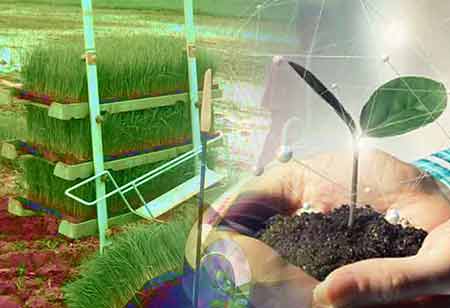Thank you for Subscribing to Agri Business Review Weekly Brief
What Do You Need To Know About Aquaculture?
Any means to improve fish production. FAO defined aquaculture as farming aquatic

By
Agri Business Review | Thursday, August 11, 2022
Stay ahead of the industry with exclusive feature stories on the top companies, expert insights and the latest news delivered straight to your inbox. Subscribe today.
Aquaculture is farming aquatic organisms comprising fish, mollusk, crustaceans, and aquatic plants.
Fremont, CA: Here, we discuss the principles, systems, and management of aquaculture. You'll know the principles necessary for aquaculture operation, identify and differentiate the characteristics of the aquaculture systems and recognize management for aquaculture operation, comprising seed/adult fish transportation.
What is aquaculture?
Any means to improve fish production. FAO defined aquaculture as farming aquatic organisms comprising fish, mollusk, crustaceans, and aquatic plants.
Aquaculture means to three concepts:
• the organism and their farming environment
• means of improving production and
• ownership of the organism
What are the risks of aquaculture?
The challenges of aquaculture are given below.
Technical:
• deficiency of quality seed
• deficiency of low-cost supplementary feed
• deficiency of inducing agents
• deficiency of need-based or region-specific aquaculture technologies
• water quality going back
• disease & parasite
Non-technical:
• Economical issue
• Social issue
• Several ownership
• Leased in and leased out
Lack of quality seeds: One of the major bottlenecks of aquaculture is the want for good quality fish seeds. Nowadays, hatcheries have no principle. As a result, hatchery operators produce low-quality fish seeds through artificial breeding.
Lack of low-cost supplementary feed: Another generalization for aquaculture is wanting an artificial balanced diet for cultivable species. Again price of the food is significant; if it is costly, then farmers would not be able to use it.
Lack of need-based or region-specific aquaculture technologies: Well-developed cultural technologies are scarce. Further, technologies suitable for marginal farmers cannot be seemly for large commercial farms.
What are the risks and threats of aquaculture?
The common risk we faced are given below –
• Occurrence of disease and parasite
• Natural disaster
• Unavailability of supplementary foods
• Unavailability of labor
• Price fall in market
• Poisoning
Occurrence of disease and parasite: By natural or man-made causes, fishes are attacked by various diseases and parasites. Usually, in polluted and untidy water bodies, fish are often attacked by disease and parasites. Sometimes, the great mortality of fish occurs due to disease and parasites.
Natural disaster: A natural disaster is one of the major risks of aquaculture. The common natural disaster is a floods, droughts, etc. About 30-40 districts are flooded every year. Therefore, farmers of those areas become impoverished.
Inaccessibility of supplementary feed: Supplementary feed is very important to aquaculture. It aids in to rise in fish production. Still, when it goes unavailable, or the price goes high, it is not easy to offer by the farmers. So, the absence of supplementary feed is a major risk to aquaculture.
Poisoning: Poisoning is one of the great risks of aquaculture. Sometimes, a water body gets poisoned by some group of people from enmity or industrial waste. A few drops of endrin kill all the organisms in a pond.
Price fall in the market: Commonly, farmers invest their money in aquaculture to profit, but sometimes, unfortunately, they do not get a profit because of the price fall of that fish in the market. So, price fall is a major risk.
How can you minimize the risk?
Integrated farming: Integrated farming may be a way to minimize the risks of aquaculture. For instance, the culture of fish with poultry. The fecal matter of poultry is used as feed for fish. So, aquaculture costs are reduced due to not having a supplementary feed.
More crops: The other way to minimize aquaculture risks is to cultivate more crops with aquaculture. The pond's margin can be used for cultivation such as vegetables, Calabash, Cowpea, etc. These are the extra income sources that may help minimize aquaculture risk.
Threat: When aquaculture risks are excessive and continually affect aquaculture, they become a threat to aquaculture. Such as –
• Long-lasting of flood
• Pestilence of disease
• High price fall in the market
• Walk out by the labor or unavailability of labor.
Any restriction of government. For example, African Magur is highly destructive to the environment, so the government has banned it.





